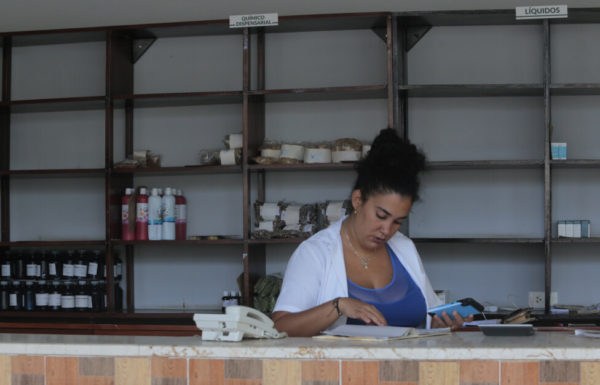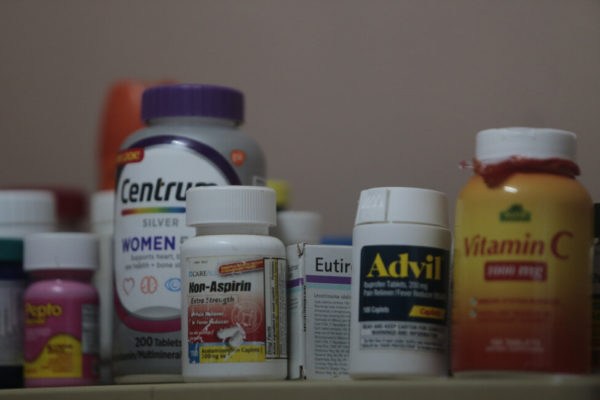Medicine Shortages, a Challenge to Public Health in Cuba

HAVANA TIMES – Medicine shortages and the need to turn to the illicit market to access most of them are a concern for Cuban citizens, in a country with accelerated demographic ageing and a surge in noncommunicable diseases (NCDs).
“Captopril and Hydrochlorothiazide haven’t come in in over four months. I was able to buy them at the drugstore in late April, but not the amount I needed, because supply is still unstable, the salesperson told me,” 41-year-old social communicator Leonardo Brito, who lives in the eastern city of Holguin, told IPS.
Diagnosed with high blood pressure at 16 years old, Brito takes three Captopril pills a day, and one Hydrochlorothiazide, “to keep myself in check, but I’ve only been taking one in these past few weeks, to make them last longer.”
In addition to high blood pressure medications and diuretics, some of the most sought-after medications – antibiotics, anxiolytics, antipsychotics, antihistamines and injectables -, are also missing from Cuban drugstore shelves or supply is scarce.
“My father, who is retired and a diabetic, needs to take Glibenclamide. I’ve looked for it on the illicit market, but I can’t afford to buy enough of the medication because my wages aren’t enough to cover the expensive prices,” teacher Barbara Cruz, a Havana resident, explained to IPS.
In early May, Rita Maria Garcia, Head of Operations and Technology at the state-run Biotechnology and Pharmaceutical Industries Group (BioCubaFarma), informed the national press that some essential drugs were being manufactured again.
She admitted that availability of medicines – both those produced in Cuba as well as imported drugs -, “continues to be very complex,” “demand can’t be met” and “the situation will still be difficult for now.”
BioCubaFarma produces 525 (61%) of the 849 medicines on the Cuban Public Health System’s List of Essential Medicines, which provides free medication to the population on this Caribbean island of 11.1 million inhabitants, marked by rapid population ageing, which is an additional strain on the sector.
Garcia mentioned the economic and financial crisis and the US’ stricter embargo against the island as reasons for this deficit.
With permits from the US Department of the Treasury, you can buy medicines and medical supplies in this country, but Cuban government officials repeat that US sanctions are hindering access to international credits and commercial operations, as well as driving up freight prices to transport raw materials.

Context
The persistent economic crisis that has already lasted three decades has damaged the infrastructure and quality of services at hospitals and clinics that form part of Cuba’s universal and free public health system.
The migration of Cuban doctors, nurses and healthcare technicians has made this situation worse.
The COVID-19 pandemic dealt another blow to national industry, including manufacturers of medicines and medical supplies.
In addition to deficient domestic agricultural production, there is the need to earn approximately 2 billion USD per year to import food, which not only means demand isn’t met but also means that many families have problems accessing a healthy and balanced diet.
This combination of factors, as well as others, pose a challenge for Cuba to meet some of the Sustainable Development Goals by 2030, especially number 3 which is linked to people’s health and wellbeing.
By contrast, the island’s biotech industry has been making breakthroughs since the ‘80s, and produces eight out of the 13 vaccines on the national immunization schedule.
Some noteworthy examples include the vaccines against Meningitis B and C and Heberbiovac HB, against Hepatitis B, the latter gaining the World Health Organization’s (WHO) prequalification and was then used in Latin American countries.
Cuba was the first Latin American and Caribbean country to develop its own vaccines against COVID-19, and it immunized almost all of its population, including children and teenagers, in record time with three of them.
Therapeutic vaccines such as CIMAvax-EGF for treating lung cancer, and drugs such as Heberprot-P, for advanced diabete foot ulcers, stand out with evident improvements to patients’ quality of life, clinical trials show.
Governments, organizations and international cooperation funds, as well as solidarity groups and religious institutions, donate medicines and medical supplies to mitigate the domestic deficit.

Imports and informal distribution
Alongside food shortages and prolonged blackouts, medicine shortages during the pandemic were one of the triggers of the social protests in over 41 Cuban cities, in July 2021.
By the end of that month, General Customs of the Republic of Cuba approved a temporary permit – which has been renewed every six months – for individuals to import medicines, as well as food and personal hygiene items, for non-commercial purposes in their baggage, with no restriction on quantity and exempt of customs duties.
This possibility allows a sector of the population to access supplies in shortage.
With shortages at state-led institutions, lots of medicines brought over to the island by people from abroad are then sold in the informal economy for exorbitant prices, in a country where an average wage is the equivalent of 23 USD and a basic pension doesn’t exceed 9 USD, taking the exchange rate on the illicit market into account.
A blister pack of ten 500 mg pills of Amoxicillin or Ciprofloxacin, two high-demand antibiotics, costs around 1.70 USD, while a blister pack of ten 500 mg pills of Diclofenac with Paracetamol or ten Enalapril pills are sold for nearly 1.40 USD, IPS verified in one of these groups.
Cubans are also annoyed by theft and corruption that feed the black market.
“Paracetamol to Captropril and Folic Acid, and even Iodine, anesthesia, cotton, or sutures are sold on social media groups. Some are imported, but others have clearly been manufactured here or have been taken from hospitals and drugstores, which are almost always empty,” Maritza Rivero, a librarian from Holguin, lamented in a conversation with IPS.
However, Damaris Carballo appreciates how support networks have appeared in the digital space amid this crisis, “where people share their needs for specific medicines and connect with people who want to share them, whether that’s because they receive them from a relative or friend living abroad, or because they are helping to manage donations from Cubans living abroad.”
Carballo, an editor who is working in the Cuban capital, told IPS that she was able to access Carbamazepine for her 62-year-old mother via one of these solidarity networks. “It was impossible to get Phenytoin, an anti-seizure medication that keeps her stable and prevents her from having seizures after a crisis she had last year.”
She pointed out that she didn’t have to pay a single cent. “The person who provided them had only one condition: that I post what it had been used for in the group,” she said.
Finding solutions
According to Rosalia Armenteros, a retired doctor who lives in Havana, it’s necessary “to find long-term solutions to prevent rough patches in medicine production and distribution.”
She explained that we have to bear in mind that problems in our everyday lives, stress and multiple shortages “impact our health, a lot more seriously in people who suffer from a chronic illness and the elderly.”
Armenteros explained to IPS that “while some illnesses can be treated with natural medicines and alternative treatments, there are emergencies that require medicines that aren’t available at A&E wards in hospitals a lot of the time.”
Almost 2.4 million people on the island are 60+, which is the equivalent of 21.6% of the population, while it’s estimated that approximatel 221,000 elderly adults live alone.
Experts recognize that in addition to rapid population ageing, another great challenge the Cuban health system faces is a surge in NCDs, and as a result, medicine availability and changes to diet and lifestyle will be crucial if they want to stop life expectancy, which currently stands at 78.45 years old, from dropping.
Nine out of the ten leading causes of death in Cuba are linked to NCDs such as heart disease, malignant tumors, cerebrovascular disease, high blood pressure, diabetes mellitus, cirrhosis and other chronic diseases of the liver, to name a few, according to the Ministry of Public Health’s 2020 Statistical Yearbook.
The National Health Survey in 2020 discovered that high blood pressure affects 37% of the population, although it’s reported that 40.2% of women suffer from it.
High blood pressure is considered a leading risk factor to suffer and die prematurely as a result of a cardiovascular incident.
The prevalence of diabetes in Cuba jumped from 4.04% growth in 2010 to 6.67% growth in 2019, and was more common in women, studies confirm.






It’s worth repeating: medicine and medical are NOT included in the US embargo.
Is there a surplus of anything in Cuba?
Only one is evident, and that is hot air! Not as a consequence of the weather, but emanating from the Communist Party Of Cuba, and its appointed dictator Miguel Diaz-Canel Bermudez.
Raul Castro Ruz is staying close to his air conditioning units – for which oddly, a power supply is constantly available. What is the use of privilege if one does not use it?
What is the Value of a Cuban life these days, who ever holds the purse string has sure been very tight with the needs of the Cuban people, & again they will supply the pleasures as the tourist request. Can,t get any lower in life then Cuban, when they have it & just won,t spend it to save a life.
“es bloqueo” translates to English as “we have no money to pay for it” Exactly the case when it relates to medicine and medical supplies.
I bring much of this to Cuba that I originally bought in the US. Much of it is made in China. Why can’t Cuba just buy it direct from China? “es bloqueo”